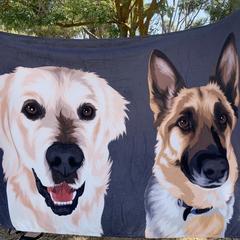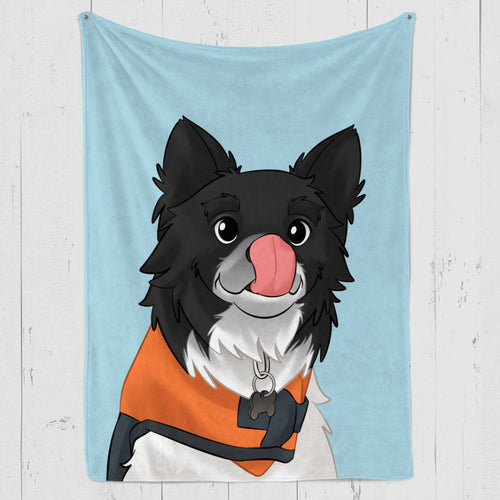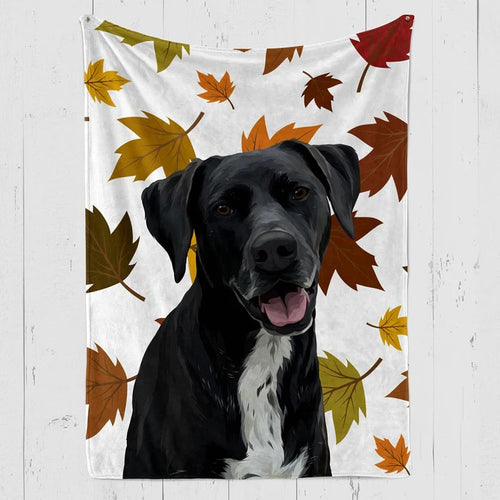
Having a dog with a history of bad conduct, or one that shows signs of developing a history of bad behavior, may be challenging. Since "aggressive" can have varied connotations depending on context, the term "aggression" is preferable. Dog bites may be avoided with the use of a number of devices and strategies. However, if this hostility is new for your dog, you should schedule a visit with the doctor first to rule out any physical causes. Aggression is a possible response from a sick or hurt dog.
While mostly well-behaved, dogs occasionally exhibit undesirable behaviors such as biting. Dog owners, trainers, and anybody else who regularly interacts with dogs should have a firm grasp of the science behind dog bite training. Everything from the causes of biting to methods for preventing and controlling it are discussed in detail in this guide on training your dog to not bite.
Why do Dogs Bite?
Although it may appear that way at times, dog bites do not typically occur for no apparent reason. Dogs can bite for a variety of reasons, and the bites they deliver can range from harmless scratches to life-threatening wounds. Sadly, many individuals fail to recognize the symptoms that a bite is imminent. Before biting, most dogs will make noises like barking, snarling, or snapping at nothing to show their displeasure. But what really causes canine attacks? Dogs may make use of their teeth as a kind of body language for a number of reasons:
Fear
Most canine aggression has its origins in anxiety. A dog's anxiety may be caused by an intrusion into their personal space. Dogs can develop "over threshold" and bite when their perceived threat is too close. Dogs who bite out of fear are typically attempting to put distance between themselves and the source of their anxiety.
Startled
When disturbed, dogs, especially sleeping ones, can bite. A dog that is abruptly awakened may become fearful and aggressive if it becomes confused about its surroundings. These attacks can startle anybody, even the dog. Many senior dogs, who may have trouble seeing or hearing, suffer from this condition when they are jolted awake. Never rouse a sleeping dog by touching it, and remind young children not to get into dog beds.
Protecting/Guarding
Your dog may bite if they are afraid of losing a prized possession, such as a toy, piece of food, or chew that they have guarded jealously. As a form of resource guarding behavior, biting can occur to safeguard prized possessions. Some dogs, regardless of breed, have pronounced guarding instincts and may resort to biting if they feel their home is being invaded or if they fear for the safety of themselves or a member of their family.
Frustration
Dogs may resort to biting if they feel threatened or cornered. Dogs may bite out of irritation if they are confined in a place they find unpleasant. An owner or leash might lead a dog to feel irritated if it prevents the dog from reaching what it wants. Redirecting a dog's bite is when he or she turns and bites anything or someone else than the original target.
Pain
When a dog is hurt or becomes ill, it may be a terrifying and upsetting experience for the animal. If a dog is hurt or in pain, even the most patient of them may bite. When moving or lifting an injured dog, you should use extra caution since the dog may bite out of fear. You should see both your veterinarian and a positive reinforcement trainer in your area if your dog's behavior suddenly changes.
Play
When people think of biting, they may not immediately think of mouthing, or biting, which is prevalent during play but often goes unnoticed. Dogs often use their mouths and teeth to investigate new environments and play with one another. While we humans may not find it very amusing, roughhousing is an integral aspect of how dogs interact with one another and, of course, their toys. Seeing dogs play-bite each other is a scary sight. Schedule a session with a trainer if you're worried about your dog's mouthiness in play if you want to learn more about whether or not your dog's play style is suitable.
Why Dog Training is Important?
Some pet owners avoid training and corrections for fear of being cruel or burdening their canine companions with guilt. However, canines do best when their lives are highly structured and governed by clear rules and limits. The dog's physical and emotional health will benefit from training. Training using positive reinforcement may be an efficient method of teaching the dog appropriate actions and preventing undesirable ones.
It is not necessary to train your dog a wide variety of complex tricks in order to obey your directions. It's crucial to teach children and pets basic orders like "sit," "stay," "come," and "leave it" to prevent many dangerous situations from escalating. In the case of a dog that gets overly enthusiastic when visitors arrive, teaching it to "sit" or "stay" might prevent it from jumping up on guests.
Dog training should also focus heavily on socialization. When dogs attack or act aggressively, it's often because they're stressed out by being in an unusual setting. Taking your dog for walks around the neighborhood, to the park, and exposing it to new people are all great ways to help it adjust to new environments and become less fearful as a result.
How to Inhibit Dog Bite Training?
Managing a dog with behavior challenges
Managing means providing your dog with the resources it needs to have a happy and healthy life free from unwanted habits. Keeping your dog happy and secure throughout its life requires getting to know your dog, encouraging it to interact with others, and overseeing it when required. The key is to create favorable conditions for the dog.
Your dog will improve their skills with repetition. If you give your dog permission to keep on showing aggressive behavior, you are endangering everyone around it. You shouldn't have to wait until your dog bites someone to receive help. A scared dog may make a choice that might hurt someone if assistance isn't provided. That action may prove fatal to the dog in the long run. You shouldn't gamble like that.
In order to prevent a dog from engaging in risky behavior, it is important to keep them and their surroundings under control. Of course, each household and canine is different, so the best method of control will depend on the specifics.
Here are a few characteristics of effective management practices:
- Signs detailing the current training procedures may be posted throughout the house to ensure that everyone is on the same page when it comes to the dog's education.
- Doorways, X-pens, and baby gates can be used to provide visible and physical separation.
- Instruct your dog to view its crate as a secure haven.
- Have the dog wear a vest that says "Dog in training" whenever you go out in public.
- Get the dog used to wearing a basket muzzle.
- Feed the dog tasty goodies via the muzzle that have great value to the dog.
- The dog's general emotional condition can be managed with the use of nutraceuticals (such as L-theanine) and aromatherapy (such as BlackWing Farms products).
Some individuals are hesitant to contemplate employing a muzzle, especially a basket muzzle. However, it may be a useful management tool for ensuring the safety of you and people around your dog. Dogs are highly attuned to human emotions and can pick up on our worries, making them more likely to bite if you express concern about them biting. Muzzling your dog while training will make you and him more relaxed, which will speed up the learning process.
Working with your dog
Dogs can be scared for a variety of reasons, including past negative experiences, insufficient exposure to the feared stimulus, and even genetic predisposition. Dogs might be difficult to deal with, but with patience and persistence, you can likely help them overcome their fears and anxiety.
After ensuring that there is no underlying medical issue, you may begin training by introducing foundational cues through relationship-based instruction. Start your training out on the right paw by teaching your dog some fundamental commands. Show compassion and patience as a professor. If you want your dog to follow your commands, you must first train it to pay attention to you.
Start training at home where there are less interruptions for both of you and your dog. Practicing with your dog at home can assist them understand what you're asking of them when you need them to pay attention to you outside the house. When your dog has learned the fundamentals, you may go on to working in more distracting environments.
Always aim to strengthen your bond of trust with your dog in every contact. Provide a lot of praise and treats, but make your dog work for them. Start by asking the dog to "sit" or "down" before rewarding it with a goodie. It's important to keep in mind that your dog should enjoy the training process despite its serious nature.
Stop training immediately if you or someone else is in danger from your dog. Consider what you were doing before this. Progress is a process, therefore if you were going too quickly or too far, slow down. Take a few of steps back to where the dog was having the most fun. Listen to how you sound emotionally. Did you get mad or frustrated? Is it possible the dog sensed in danger? Most healthy dogs will react positively to patient, loving training.
Schedule another appointment with your vet for a checkup if you and your dog hit a stalemate. A dog's demeanor might be negatively impacted by discomfort, illness, or injury. You might also contact with a professional dog trainer who specializes in relationship-based training or an accredited animal behavior consultant. Working with a trained expert can help you and your dog overcome certain behavioral issues.
Finally, keep in mind that teaching and practicing social skills is an ongoing process for the canine companion. Always and forever be training and praising your dog. You want a calm dog who is confident in new situations and can safely explore many different environments.

Frequently Asked Questions:
Does bitework make dogs aggressive?
Canine bitework, when conducted properly, does not induce aggression in dogs. It's imperative to have seasoned trainers who emphasize control and discipline when using bitework, a specialized training method commonly employed for working dogs like those in police or protection roles. Aggressive behavior in dogs can result from harsh or ineffective training methods.
How can workers prevent dog bites during work encounters?
Employees should receive education on interpreting canine body language and behavior. It's essential to remain composed, seek permission from the dog's owner, and avoid sudden or provocative movements when approaching the animal.
What actions should solitary workers take if bitten by a dog on the job?
In the event of a dog bite, lone workers should promptly seek medical evaluation and notify their employer. Documenting details of the dog bite and the owner's contact information is crucial, considering potential legal or insurance implications.
How can workers identify signs of aggression or fear in dogs?
Signs of canine aggression manifest as bared teeth, growling, rigid body posture, and direct eye contact. Conversely, cowering, trembling, and avoiding eye contact indicate fear.
What precautions should parcel couriers take to prevent dog bites?
Parcel carriers should be trained to recognize problematic dog behavior, carry deterrents such as pepper spray or noise-emitting devices, and exercise caution when approaching residences with dogs.
Are there specialized training programs or resources for parcel couriers regarding dog bite prevention?
Organizations offer parcel carriers specific training programs. Employers can provide access to training resources, such as workshops and online courses.
Why is training to prevent dog bites important?
Preventing dog bites through training is crucial for ensuring the safety and well-being of both humans and dogs. It's a means to promote harmony between dogs and people and mitigate the risk of dogs biting others.
At what age is it appropriate to commence training to prevent dog bites?
Puppies can begin learning not to bite as early as 8 to 10 weeks of age. Formal obedience training typically commences around 6 months, but dogs can start learning basic commands and socialization at an earlier age.
Can all dogs be trained to control their biting tendencies?
While it's possible to train some dogs to inhibit biting, the ease of training depends on factors like the dog's breed, temperament, and past experiences.
What are indicators of aggressive behavior in dogs?
Indications of aggressive behavior in dogs include growling, snapping, biting, raised hackles, and a rigid body stance. These behaviors signify that the dog feels threatened or protective.
How long does training to inhibit dog biting typically take?
The duration of training varies according to the dog. Some puppies may learn bite inhibition in a few weeks, while others might require several months. Consistency and patience are paramount.
Is professional training a necessity for controlling dog biting behavior?
Professional training can be highly beneficial, especially for dogs with frequent biting incidents or specific training needs. However, determined dog owners can also teach their dogs how to control their biting tendencies.
Are there different approaches to dog bite training?
Various methods are available to teach dogs not to bite, including positive reinforcement, desensitization, and bite inhibition training. The choice of method depends on the dog's requirements and the trainer's style.
Is it feasible to independently train a dog to stop biting?
Many dog owners have successfully employed positive reinforcement methods and consistent training to discourage their dogs from biting. However, for more complex situations, consulting a professional trainer can be beneficial.
Is dog bite training safe for dogs and humans?
When conducted with compassion and in a positive manner, dog bite training is safe for all involved. It plays a vital role in nurturing well-behaved, non-aggressive dogs.
Which dog breeds are more prone to displaying aggressive biting behavior?
Some dog breeds, including Rottweilers, Pit Bulls, and Doberman Pinschers, may exhibit a higher tendency for aggressive biting behavior. Nonetheless, it's crucial to acknowledge that various factors, including training and socialization, can influence aggression.
What should I do if my dog has previously bitten someone?
If your dog has bitten someone, prioritize seeking medical attention for the victim, if needed. Additionally, consult your veterinarian to evaluate your dog's behavior. Consider engaging a professional dog trainer or behaviorist to address the issue. Legal and liability matters may also arise, necessitating legal counsel if required.
Reference Links:
Similar Articles
Latest Review on Woof Blankets
To have such a masterpiece by my side every day is a gift for me and my memories with Rex. Thank you WoofBlankets for such an opportunity to recreate his image on a blanket.Lara o’ Miguel US, California

COLLECTION WORTH EVERY PENNY
BEST SELLERS
-
4th of July Custom Pet Blanket
![4th of July Custom Pet Blanket Online]()
- NEW
- -39%
BlanketsSHOP NOW- Regular price
- from $69.95
- Sale price
- from $69.95
- Regular price
-
$114.95 - Unit price
- per
Sold out -
Woofy Single Color Custom Pet Blanket
![Woofy Single Custom Pet Blanket – Woof Blanket]()
- -41%
BlanketsSHOP NOW- Regular price
- from $64.95
- Sale price
- from $64.95
- Regular price
-
$109.95 - Unit price
- per
Sold out -
Summer Time Custom Pet Blanket
![Summer Time Custom Pet Blanket]()
- -39%
BlanketsSHOP NOW- Regular price
- from $69.95
- Sale price
- from $69.95
- Regular price
-
$114.95 - Unit price
- per
Sold out -
The Admiral - Custom Pet Portrait
![The Admiral - Custom Pet Portrait Online]()
- NEW
- -25%
CanvasSHOP NOW- Regular price
- from $59.95
- Sale price
- from $59.95
- Regular price
-
$79.95 - Unit price
- per
Sold out -
Wings of Loyalty - Custom Pet Portrait
![]()
- NEW
CanvasSHOP NOW- Regular price
- from $59.95
- Sale price
- from $59.95
- Regular price
-
- Unit price
- per
Sold out -
Celestial Paws - Custom Pet Portrait
![]() CanvasSHOP NOW
CanvasSHOP NOW- Regular price
- from $59.95
- Sale price
- from $59.95
- Regular price
-
- Unit price
- per
Sold out -
Woof Splash Custom Pet Blanket
![Woof Splash Custom Pet Blanket]()
- -39%
BlanketsSHOP NOW- Regular price
- from $69.95
- Sale price
- from $69.95
- Regular price
-
$114.95 - Unit price
- per
Sold out -
The Loyal Soul - Custom Pet Portrait
![]()
- NEW
SHOP NOW- Regular price
- from $59.95
- Sale price
- from $59.95
- Regular price
-
- Unit price
- per
Sold out -
Modern Pet Portraits
![Cute Dog Modern Pet Portraits Online]()
- NEW
- -36%
CanvasSHOP NOW- Regular price
- from $59.95
- Sale price
- from $59.95
- Regular price
-
$93.95 - Unit price
- per
Sold out -
Cartoonized Pet Portraits (New)
![Cartoonized Pet Custom Portraits Online]()
- -36%
SHOP NOW- Regular price
- from $59.95
- Sale price
- from $59.95
- Regular price
-
$93.95 - Unit price
- per
Sold out -
Pet Memorial Custom Photo Collage Blanket
![Personalized pet memorial quilt with photos]()
- -41%
BlanketsSHOP NOW- Regular price
- from $64.95
- Sale price
- from $64.95
- Regular price
-
$109.95 - Unit price
- per
Sold out -
The French Sailor - Custom Pet Portrait
![]()
- -25%
CanvasSHOP NOW- Regular price
- from $59.95
- Sale price
- from $59.95
- Regular price
-
$79.95 - Unit price
- per
Sold out -
The Policeman - Custom Pet Portrait
![]()
- NEW
- -25%
CanvasSHOP NOW- Regular price
- from $59.95
- Sale price
- from $59.95
- Regular price
-
$79.95 - Unit price
- per
Sold out -
The General - Custom Pet Portrait
![]()
- NEW
- -25%
CanvasSHOP NOW- Regular price
- from $59.95
- Sale price
- from $59.95
- Regular price
-
$79.95 - Unit price
- per
Sold out -
Woof Love Custom Pet Blanket
![Woof Love Custom Pet Blanket]()
- -39%
BlanketsSHOP NOW- Regular price
- from $69.95
- Sale price
- from $69.95
- Regular price
-
$114.95 - Unit price
- per
Sold out -
The Ambassador - Custom Pet Portrait
![The Ambassador - Custom Pet Portrait Online]()
- NEW
- -25%
CanvasSHOP NOW- Regular price
- from $59.95
- Sale price
- from $59.95
- Regular price
-
$79.95 - Unit price
- per
Sold out -
Fall In Love Custom Pet Blanket
![Fall In Love Custom Dog Blanket]()
- NEW
- -39%
BlanketsSHOP NOW- Regular price
- from $69.95
- Sale price
- from $69.95
- Regular price
-
$114.95 - Unit price
- per
Sold out -
The Classy Lady - Custom Pet Portrait
![The Classy Lady]()
- NEW
- -25%
CanvasSHOP NOW- Regular price
- from $59.95
- Sale price
- from $59.95
- Regular price
-
$79.95 - Unit price
- per
Sold out -
The Duke - Custom Pet Portrait
![The Duke - Custom Pet Portrait]()
- NEW
- -25%
CanvasSHOP NOW- Regular price
- from $59.95
- Sale price
- from $59.95
- Regular price
-
$79.95 - Unit price
- per
Sold out -
Dog In Suit- Custom Pet Portrait
![Dash Dog In Suit- Custom Pet Portrait Online]()
- NEW
- -25%
CanvasSHOP NOW- Regular price
- from $59.95
- Sale price
- from $59.95
- Regular price
-
$79.95 - Unit price
- per
Sold out -
The Princess - Custom Pet Portrait
![]()
- NEW
- -25%
CanvasSHOP NOW- Regular price
- from $59.95
- Sale price
- from $59.95
- Regular price
-
$79.95 - Unit price
- per
Sold out -
Modern Pet Portrait with One Mug
![Modern Pet Portrait with One Mug]()
- -25%
Print MaterialSHOP NOW- Regular price
- from $99.95
- Sale price
- from $99.95
- Regular price
-
$133.95 - Unit price
- per
Sold out -
The Aristocrat - Custom Pet Portrait
![The Aristocrat - Custom Pet Portrait At Best Price]()
- NEW
- -25%
CanvasSHOP NOW- Regular price
- from $59.95
- Sale price
- from $59.95
- Regular price
-
$79.95 - Unit price
- per
Sold out -
Single Color Custom Blanket with 1 Mug
![Single Color Custom Blanket with 1 Mug]() BlanketsSHOP NOW
BlanketsSHOP NOW- Regular price
- from $99.95
- Sale price
- from $99.95
- Regular price
-
- Unit price
- per
Sold out -
Single Color Custom Blanket with 2 Pillows
![Single Color Custom Pet Blanket with 2 Pillows]()
- -21%
BlanketsSHOP NOW- Regular price
- from $99.95
- Sale price
- from $99.95
- Regular price
-
$125.95 - Unit price
- per
Sold out -
The Dog in Suit Custom Pet Mug
![]()
- -20%
MugsSHOP NOW- Regular price
- $39.95
- Sale price
- $39.95
- Regular price
-
$49.95 - Unit price
- per
Sold out -
Angel Custom Pet Mug
![]()
- -20%
MugsSHOP NOW- Regular price
- $39.95
- Sale price
- $39.95
- Regular price
-
$49.95 - Unit price
- per
Sold out -
This Human Belongs To - Custom Pet Mug
![]()
- NEW
- -20%
MugsSHOP NOW- Regular price
- $39.95
- Sale price
- $39.95
- Regular price
-
$49.95 - Unit price
- per
Sold out -
It's Not Dog Hair Custom Pet Mug
![]()
- NEW
- -20%
MugsSHOP NOW- Regular price
- $39.95
- Sale price
- $39.95
- Regular price
-
$49.95 - Unit price
- per
Sold out -
My Dog Is My Valentine Custom Pet Mug
![]()
- NEW
- -20%
MugsSHOP NOW- Regular price
- $39.95
- Sale price
- $39.95
- Regular price
-
$49.95 - Unit price
- per
Sold out -
3 Photos With Message Custom Pet Mug
![]()
- NEW
- -20%
MugsSHOP NOW- Regular price
- $39.95
- Sale price
- $39.95
- Regular price
-
$49.95 - Unit price
- per
Sold out -
My Valentine Has Four Legs- Personalized Mugs
![]()
- NEW
- -20%
MugsSHOP NOW- Regular price
- $39.95
- Sale price
- $39.95
- Regular price
-
$49.95 - Unit price
- per
Sold out -
Dog Mamma Custom Pet Coffee Mug
![]()
- -20%
MugsSHOP NOW- Regular price
- $39.95
- Sale price
- $39.95
- Regular price
-
$49.95 - Unit price
- per
Sold out -
Uncle Sam - Custom Pet Portrait
![]()
- NEW
- -25%
CanvasSHOP NOW- Regular price
- from $59.95
- Sale price
- from $59.95
- Regular price
-
$79.95 - Unit price
- per
Sold out -
The Revolutionary Emperor - Custom Pet Portrait
![]()
- NEW
- -25%
CanvasSHOP NOW- Regular price
- from $59.95
- Sale price
- from $59.95
- Regular price
-
$79.95 - Unit price
- per
Sold out -
The Princess Paws - Custom Pet Portrait
![]()
- -25%
CanvasSHOP NOW- Regular price
- from $59.95
- Sale price
- from $59.95
- Regular price
-
$79.95 - Unit price
- per
Sold out -
Exclusive Custom Pet Blanket
![Exclusive Custom Pet Blanket]()
- -39%
BlanketsSHOP NOW- Regular price
- from $69.95
- Sale price
- from $69.95
- Regular price
-
$114.95 - Unit price
- per
Sold out -
The Dark Crusader Knight - Custom Pet Portrait
![]()
- -25%
CanvasSHOP NOW- Regular price
- from $59.95
- Sale price
- from $59.95
- Regular price
-
$79.95 - Unit price
- per
Sold out





























































